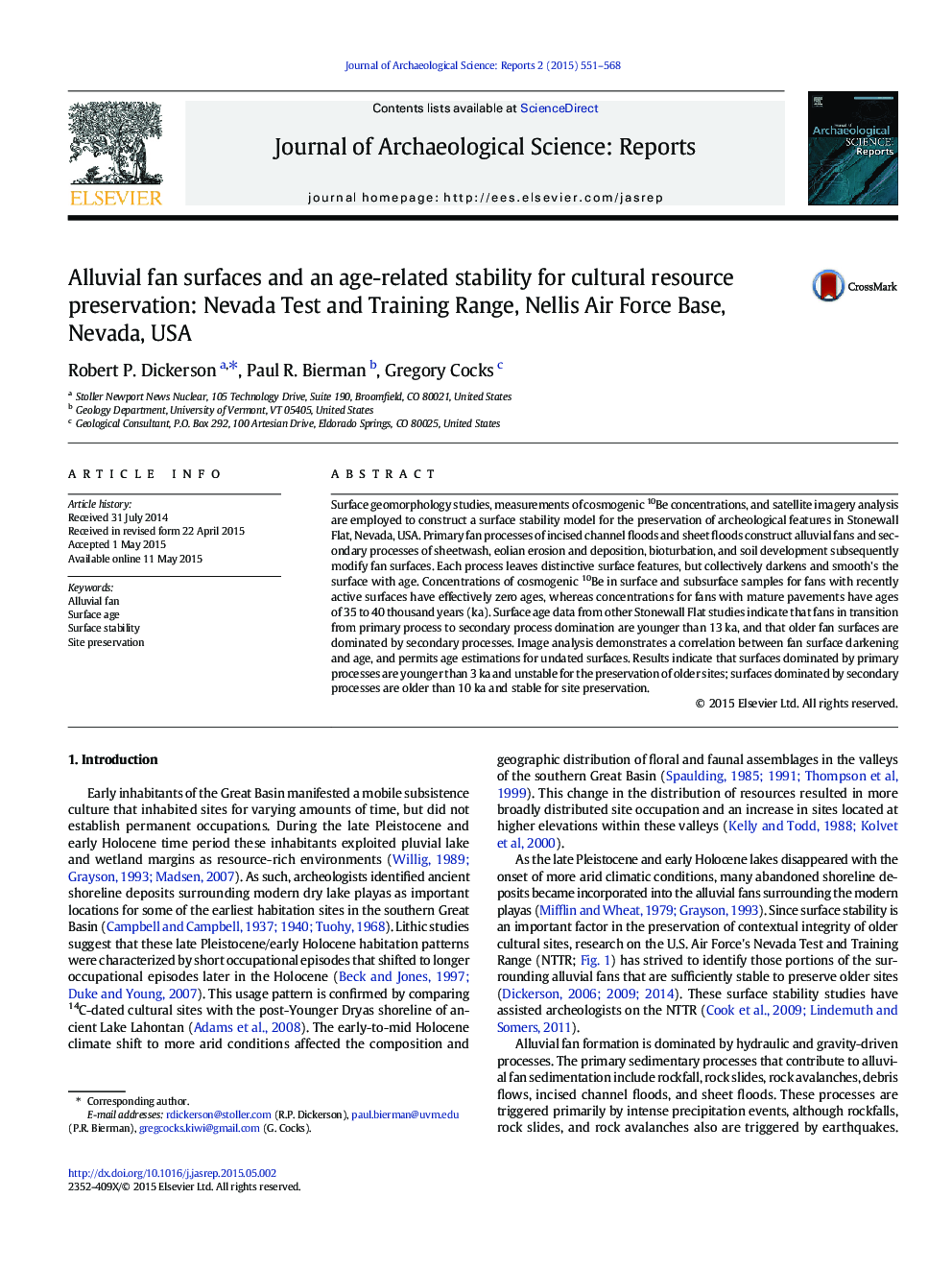| Article ID | Journal | Published Year | Pages | File Type |
|---|---|---|---|---|
| 7446608 | Journal of Archaeological Science: Reports | 2015 | 18 Pages |
Abstract
Surface geomorphology studies, measurements of cosmogenic 10Be concentrations, and satellite imagery analysis are employed to construct a surface stability model for the preservation of archeological features in Stonewall Flat, Nevada, USA. Primary fan processes of incised channel floods and sheet floods construct alluvial fans and secondary processes of sheetwash, eolian erosion and deposition, bioturbation, and soil development subsequently modify fan surfaces. Each process leaves distinctive surface features, but collectively darkens and smooth's the surface with age. Concentrations of cosmogenic 10Be in surface and subsurface samples for fans with recently active surfaces have effectively zero ages, whereas concentrations for fans with mature pavements have ages of 35 to 40 thousand years (ka). Surface age data from other Stonewall Flat studies indicate that fans in transition from primary process to secondary process domination are younger than 13 ka, and that older fan surfaces are dominated by secondary processes. Image analysis demonstrates a correlation between fan surface darkening and age, and permits age estimations for undated surfaces. Results indicate that surfaces dominated by primary processes are younger than 3 ka and unstable for the preservation of older sites; surfaces dominated by secondary processes are older than 10 ka and stable for site preservation.
Keywords
Related Topics
Social Sciences and Humanities
Arts and Humanities
History
Authors
Robert P. Dickerson, Paul R. Bierman, Gregory Cocks,
